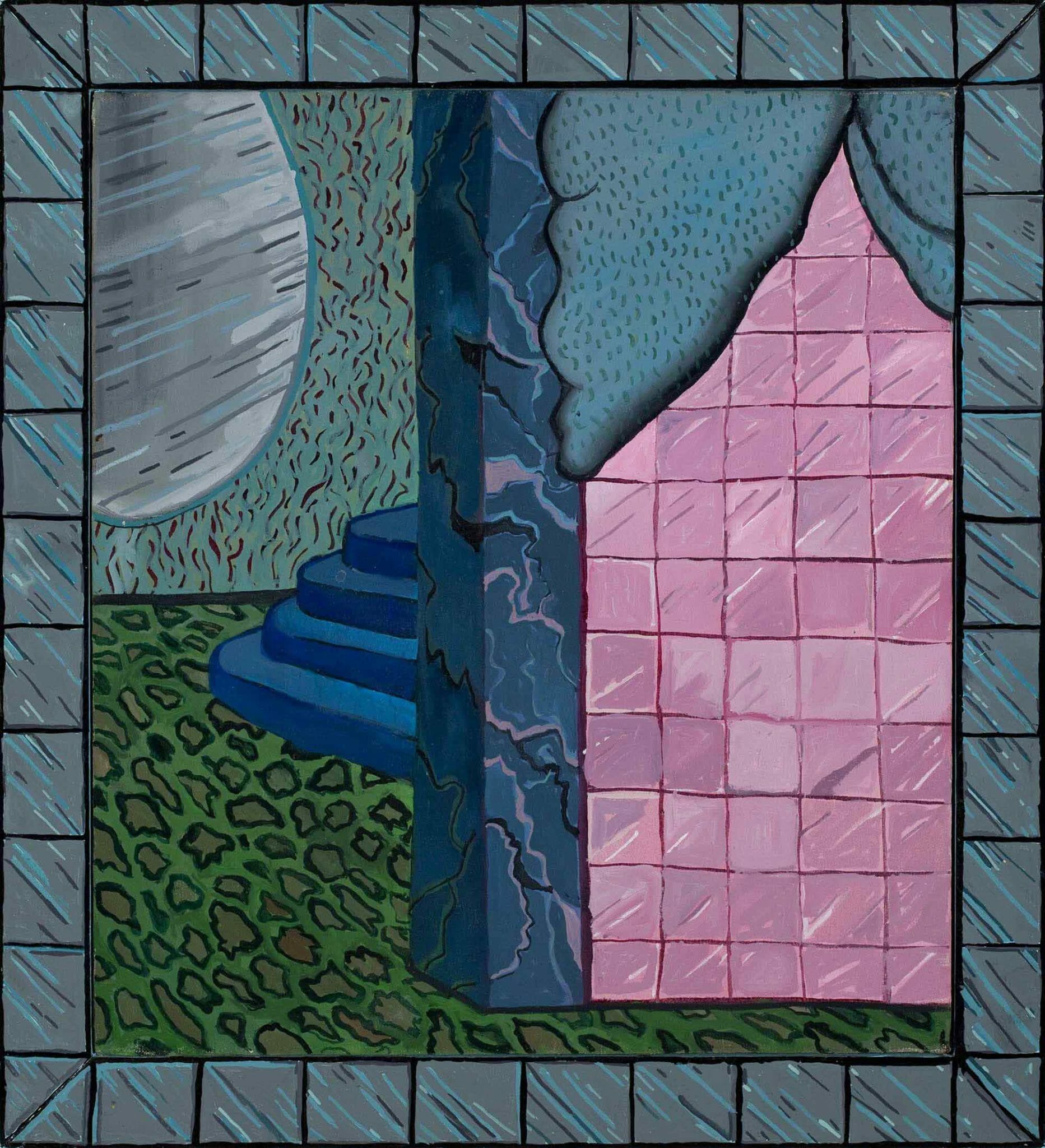
Lesson Plan | Philip Hanson: 3D Theatrical Environments – MMoCA
Artwork
Mezzanine, 1969, oil on board with artist-painted frame
Subjects
Visual Art, Language Arts, Theater
Author
Meri Lau, art educator
Essential Questions
- How do life experiences influence the way you relate to art?
- How does learning about art impact how we perceive the world?
- What can we learn from our responses to art?
Grade Level
1-5
Objectives
- Students will add three-dimensional effects and animation tools to their original pictures to narrate a story.
Activity
Introduce the work of Philip Hanson and his use of doors, curtains, stairs, windows and mirrors to create mystery or suspense.
Enduring Understanding
Individual aesthetic and empathetic awareness developed through engagement can lead to understanding and appreciation of self, others, the natural world and constructed environments.
Discussion Questions
Instructions
Part 1
Students create a picture that includes a doorway that is partially covered with a curtain so that the viewer can imagine what is beyond what we see. Students use fabric or found materials to cover the opening of the door or doorway. Students make windows, steps, mirrors and doors in the scene to create a specific mood.
Part 2
Students make a three-dimensional stage, diorama or constructed environment that reveals a story. Students can make the curtain slide or open, creating a stage for something to happen, pulling back the curtain or open the door to reveal part of the narrative. Students present the narrative to an audience of peers, friends or family.
Part 3
Students animate their picture using stop-action or animation tools. Students make characters and set designs intended for animation.
Materials
Watercolors, gouache, paintbrushes, watercolor paper
Vocabulary
Gouache, etching, narrative, vignette, watercolor wash
Extensions
Theater, Storytelling, Dramatic Play, Social Studies, Music

